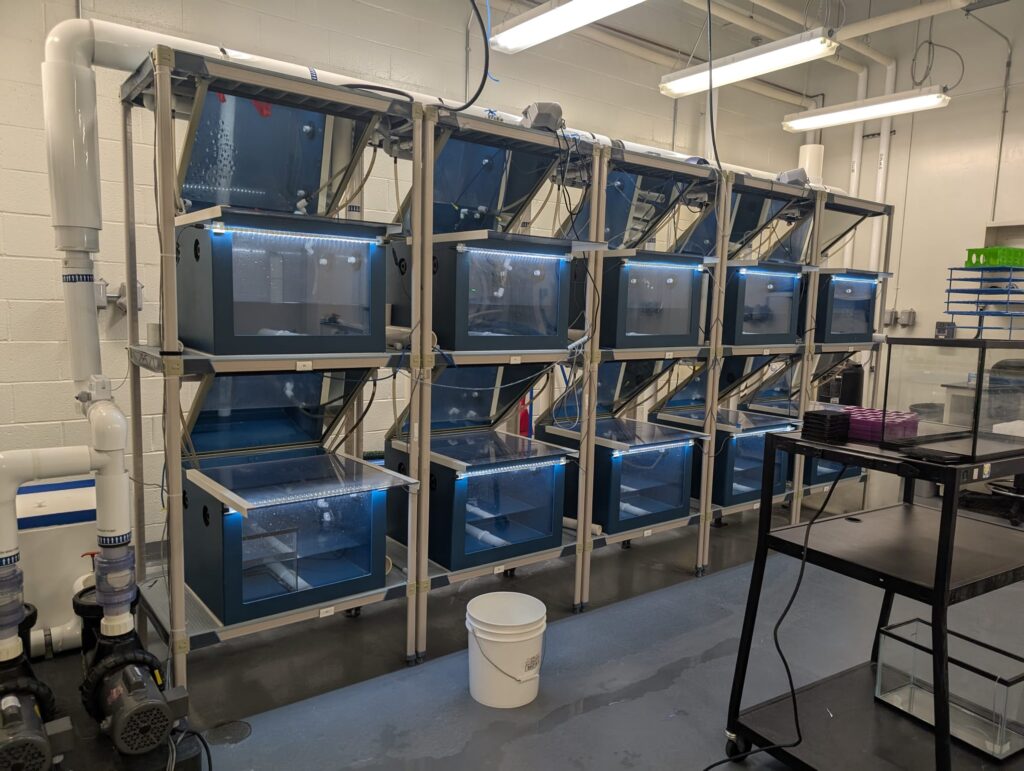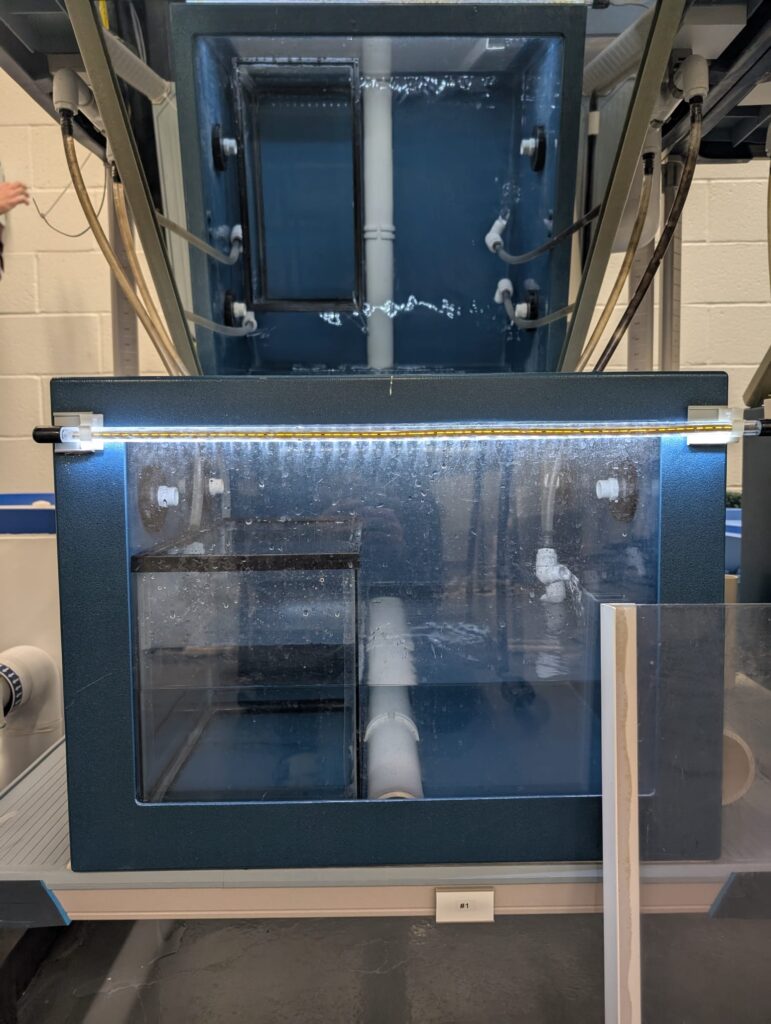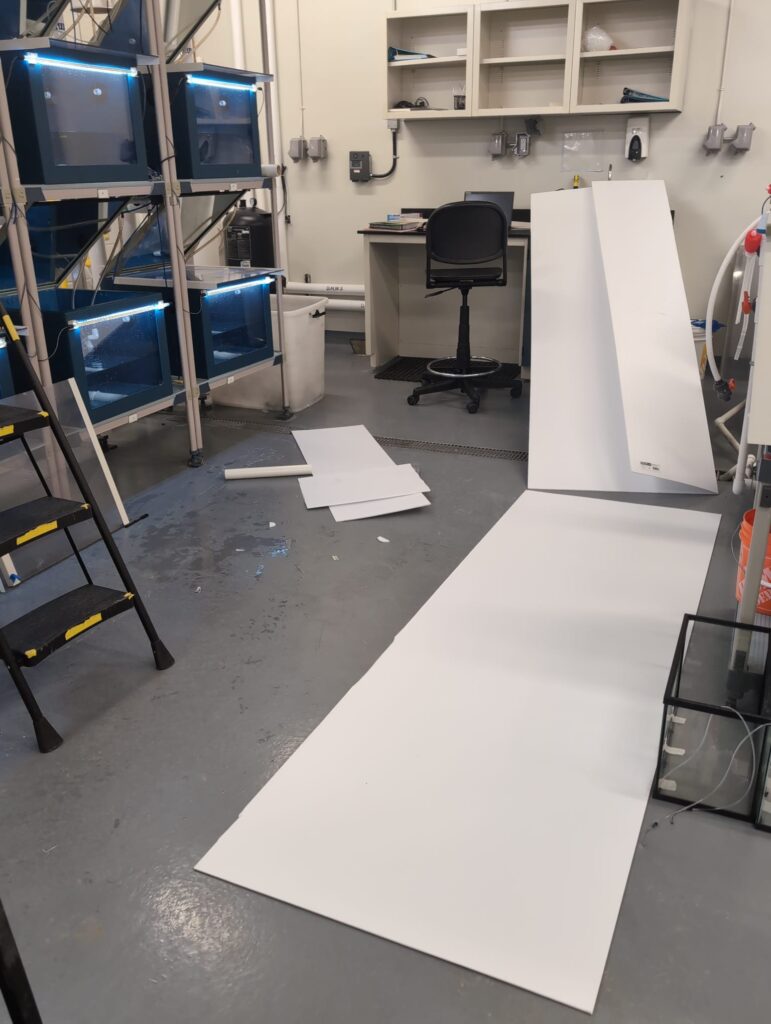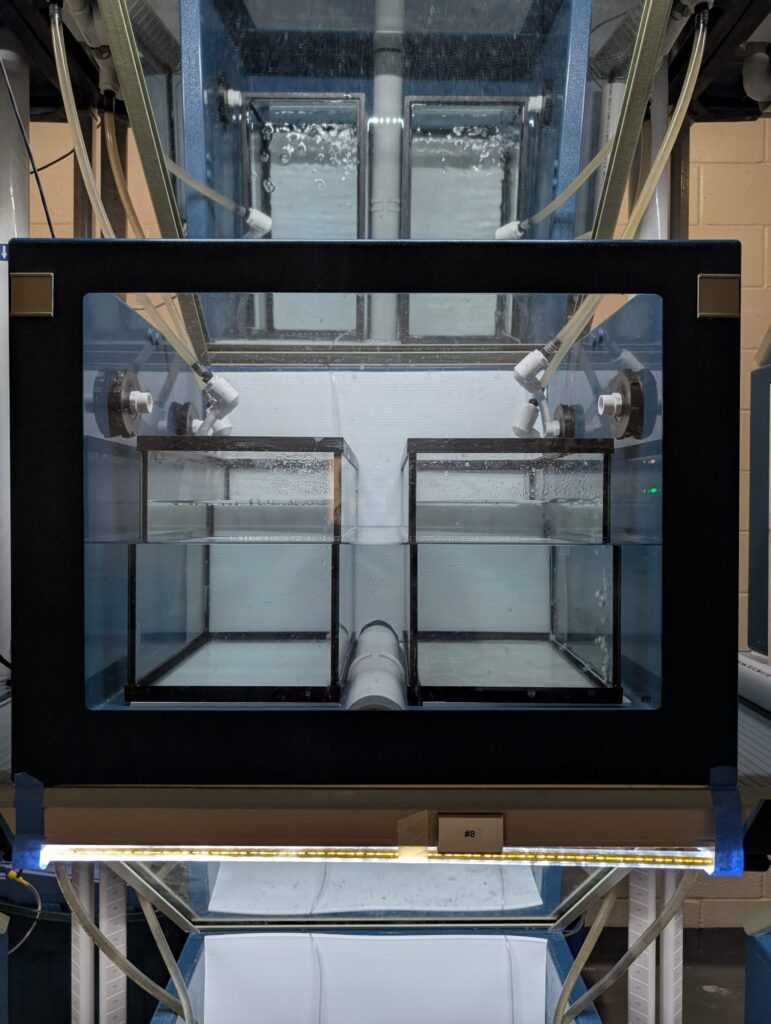Behavioural ecotoxicology often relies on video recording. The quality of analysis of those videos is reliant on having good contrast.

One of my favourite units to utilize for behavioural work is at the University of Lethbridge – we call it the Seasonal Foraging Unit. I was recently back in Lethbridge on a research collaboration where I performed a behavioural study in the unit.
While I am a big fan of blue in general, this particular shade provides very poor contrast for visualizing and tracking fish.
Not to mention the fact this particular experiment involved a tank being inside of the unit (also tank-like), so we later had some “reflection management” tactics — but that is a whole other blog post worth of trial and error.


The challenge becomes: how do you turn the bottom and back of a tank lighter, but in a way that can be easily cleaned and be submerged in water that can be anywhere from 8 to 28 degrees Celsius? Well, the one answer I always revert to: corroplast.
Corroplast = corrugated plastic.
An important consideration: it is sold in 8 foot by 4 foot sheets, so bring at least a station wagon to transport (otherwise bring a cutting device and measuring tape and cut as needed in the parking lot)

Adding a back plate was the first step. The ease of working with corroplast meant I could make a cutout for the white pipe section along the bottom.
Add in the bottom plates(and fix the lighting) and we were set to go!
This experiment was methodologically intricate – multiple aspects will get their own post, because this experiment was…awesome.
